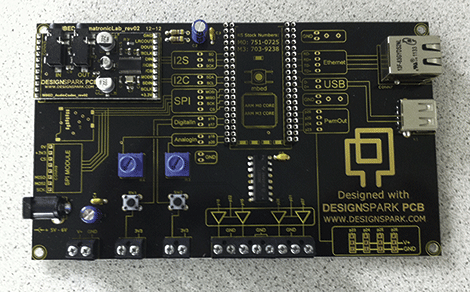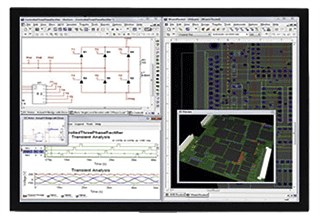Andrew Back, founding member of the Open Source Hardware User Group and David Tarrant, Head of Community Development at RS Components, study the growth that free hardware is experiencing.
Free Hardware (whose acronym in English corresponds to OSHW, Open Source Hardware) is called the design of publicly accessible hardware so that anyone can study, modify, distribute, manufacture or sell a design, as well as hardware based on said design. Thus, the design must be available in a specific format that allows modifications and there must be no discrimination by field of action.
open source movement
As a movement, free hardware is much more recent than free or open source software (whose acronym in English corresponds to F/OSS), however, its origins are similar and it arose from the need for specific or "niche" applications. and tools designed for engineers or programmers, as well as for those with a different view of existing technology.
Open source software is currently a fairly well-known concept: it is software released under a license that is part of the public domain and has many advantages such as saving license costs or not being subject to to vendor software updates, shared source code review and maintenance responsibility, and combined resources for problem resolution. This development and licensing strategy not only results in significantly more affordable enterprise applications, but is also seen as a smarter way of doing things.
While the use of Open Source or Free Software is already well established, it is still early days for Free Hardware. There are several similarities between these two concepts, but there are also a number of main differences between them: the Free Hardware collaboration model is not so advanced, the compatibility of design tools, for example, is a problem, sometimes unlike editing source code in a text editor. Therefore, the movement presents fewer entities that create and contribute to the development of hardware design than those that make use of it.
Licensing
As in the case of software, an important issue related to Free Hardware is that of licences. Many open source electronic projects will have both hardware and software elements and will provide design elements such as diagrams, mechanical drawings, bills of materials (BOMs), PCB layouts, Hardware Description Language source codes (which stands for HDL) and assembly instructions, as well as source codes for microcontroller firmware and, it is advisable to have separate licenses for hardware and software.
A fundamental principle of both Open Source or Free Software and Free Hardware is that the license should not constitute any restriction for the use of the work (including manufactured hardware) in a specific field of action. Therefore, a license cannot be a restriction on the use of a hardware design in a commercial context, for example.
Opportunities
It can be said that, to date, the biggest success in relation to Free Hardware is the Arduino platform and the main reason for this success is that it establishes a brilliant ecosystem; all hardware design files were made publicly available so anyone could study the design and extend it for their own interest in both a commercial and non-commercial context, combined with an equally flexible and accessible software platform . Arduino has benefited from third-party, derivative, and add-on hardware, and today is a growing brand with a strong reputation for quality.
Following his example, hardware companies are seeing more and more in Free Hardware an opportunity to introduce their technology in the market as well as in educational centers. There are more and more design files for development kits under an open source license as it happened with software and the most used components are often available.
Open Source Hardware (OSHW) also offers significant opportunities to respond to the ongoing compression of product development cycles. A library of reusable components can form the basis of a set of technological tools for use in prototyping prior to manufacturing a product.
Another increasingly common approach is to create an open strategic technology – for example a new interface standard for a specific application or market – which could lead to widespread use. Instead of thinking of it as giving away “Intellectual Property”, more and more companies are looking for the opportunity to provide a design in a liberal licensing format for the common benefit, for example interoperability or cost reduction.
Applications
Funding for Free Hardware (OSHW) is not yet sufficiently established, as in the case of Free and Open Software (F/OSS), but it is increasingly finding its way into various markets and applications. CERN (European Organization for Nuclear Research) is an important example of a leading organization that is fully embracing the concept and has recognized the benefits of sharing open designs with its manufacturer base. It has a design base that includes ARM-based single-board computers and high-speed data acquisition cards, key components used in experiments at the LHC (Large Hadron Collider).
A key example of an Open Source Hardware (OSHW) product is the MakerBot 3D printer: the first version was based on open source design.
Another high-profile application is the use of the open source OpenRISC microprocessor in satellite and digital television. And in the automotive sector, the OpenXC platform, led by Ford, uses open source hardware and software to enable third parties to innovate in cars. However, Open Source Hardware (OSHW) has not yet played a significant role in the development of next-generation consumer products, although the OpenMoko mobile phone and Novena laptop are moving in that direction.
Distribution
As Open Hardware (OSHW) today is primarily used by micro-enterprises that make products and tools for niche markets, distributors like RS play a key role in the growth and development of this movement. They are ideally positioned to provide the necessary support resources with their extensive component offering, as well as their logistics and distribution expertise.
Resellers also have the know-how and experience to grow hardware ecosystems and provide a platform to help engineers find partners. RS maintains the Open Source Design Center at Designspark.com, the company's online resource for electronic design engineers. This design hub brings together many of the elements that go into open source design into a single, easily accessible reference point, housing information on issues ranging from licensing rules to management hardware and software advice, as well as fostering active participation in projects.
Future
Although to date Open Source Hardware has largely been seen at the simpler end of the electronic design spectrum, it encompasses two important assets within the engineering community – goodwill and collective intelligence and is being recognized as a important movement with the increase of opportunities for the industry and the education.
Tags
free hardware




